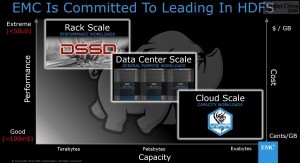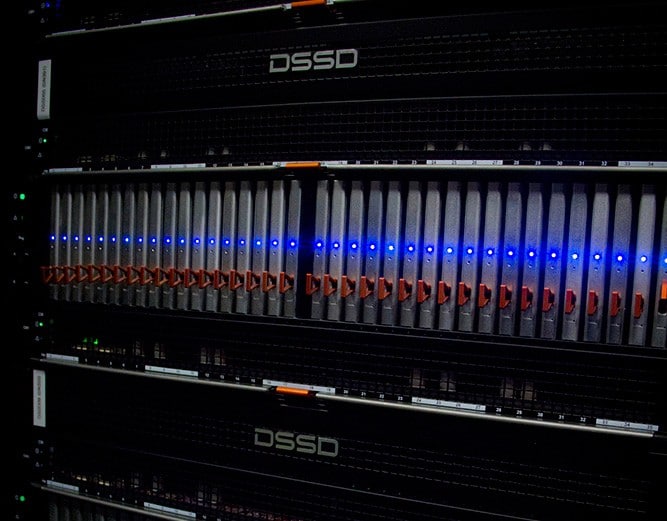
Mr. Abhijit Potnis, Director – Technology Solution, India and SAARC, EMC, talks to EFY about the elements that power Global Nervous system and how traditional storage infrastructure is fast replaced by high performing Flash technology and the “IoT Of Tomorrow”.
Q EMC has a track record of handling storage in a massive scale. What challenges could be faced while integrating to IoT based applications?
A Internet of Things (IoT) has generated excitement for a few years now, with start-ups and established businesses placing bets on the industry’s growth.1 Some of the earliest investments have begun to pay off, with smart thermostats, wearable fitness devices, and other innovations becoming mainstream. As IoT expands from millions of devices to tens of billions in the next few years, it will have major impacts on infrastructure, industry standards, security, and business models throughout the entire IT ecosystem.. These will shape many opportunities for technology companies, enterprises, developers, investors, and startup entrepreneurs in what some people have referred to as the “Global Nervous System” of the future. As more devices proliferate and are connected, their value will grow exponentially with the “network effect.”
However IOT does come with its own set of challenges. With the massive amount of data being , Traditional storage simply can’t scale to support this vast amounts of IoT-generated data.

Neither traditional file nor block storage is ideally suited for the kind of big data associated with IoT. The velocity and diversity of IoT data generation means that trying to manage it with a file storage folder structure is impractical. This unstructured nature of IoT big data also makes it unsuited for the database-orientated characteristics of block storage.
Another factor is that data storage for IoT must also be able to cope with potentially massive data growth in a short time. The millions of small data packets generated in IoT can quickly add up to seriously big data—on a petabyte-scale—creating a data growth, cost and storage challenge to the enterprise.
Data storage for IoT also needs to be able to ingest data as fast as it arrives from millions of sources—so velocity, availability and reliability are vital. The bigger your IoT data pool, the more precise and valuable your analytics have the potential to be. The creation of each item of IoT data is a one-time event. Miss out on capturing it and you miss your chance to derive value from it. If your storage platform goes down at the wrong moment, you may miss a very important data event.
In addition, analytics tools like Hadoop MapReduce and YARN (Yet Another Resource Negotiator) now offer computing power that was previously exclusive to large enterprises and supercomputers. With these tools, a larger data set equates to higher accuracy in predictive analytics.
The EMC ECS 2.2 helps organizations to keep up with the blazing pace of digital transformation. ECS is built from the ground up to handle the massive burden generated by object data from mobile devices, social media and the Internet of Things (IoT), something many traditional storage platforms aren’t designed to handle
Q By 2020 about 50 billion IoT devices may get connected to such infrastructures. What transfer speeds are we expecting here?
A Talking about transfer speeds in the IOT space, it is usually dependent on the internet connection speeds as well as the IT infrastructure of an organisation.

Q What disadvantages where seen in the traditional storage devices than the Solid state ones?
A Flash (SSD) is and quickly replacing hard drives (HDD) for all primary workloads. Why? Take a typical HDD – on its best day it will serve about 180 IOPs @ 5-7 msec response times. A SSD (eMLC) can serve 50x – 100x the performance of a HDD. You could say that a SSD can replace a 100 HDDs in terms of performance (not capacity of course) and deliver that at Micro-second latencies. This makes it quite an obvious choice for replacing HDDs with SSDs for all primary applications.
Secondly, for the reason of performance an aggregate of HDDs is needed, even though capacity can be satisfied by a few HDDs – this brings the needs for more space, a lot of cooling (spinning motors) and tons of power. Compared to that SSDs are cool, silent and efficient.
With In-line deduplication and in-line compression in AFA systems, SSDs can be made to store 2x to 10x the actual capacity making them come close to the price points of HDD. Additionally with in-line Thin Provisioning and Thin, Zero Space Clones the SSD based AFA systems tend to become almost the same cost as a HDD based system. Add the savings on Power, Cooling, Space and administration the 3 to 5 years TCO screams in favour of SSD based AFA systems.
One key point is that the AFA and its operating system plays a key role in exploiting the benefits of SSDs and making them economical to use. XtremIO from EMC is a Leader in the AFA Marketplace.
Q What are the benefits of having solid state drives? Is it a hype or it really performs given IoT needs real time data collection and processing?
A The advent of solid state drive (SSD) in the last few years as a viable alternative to the traditional hard drive (HDD) providing a much higher speed than the latter and other considerable advantages, has built up the reputation of this flash-based storage technology so quickly to the point that so many IT professionals were impelled to deeming it “the best performance upgrade” and recommending it to everyone looking forward to take their computer to the next level. That’s because, unlike solid state drives, no single hardware upgrade is capable of offering the kind of instantaneous and observable boost in system responsiveness, compared to a system based on traditional hard drive spinning media.
The following are the core benefits of Solid State Drives:
- The I/O capability of Flash SSDs is 10X faster than spinning drives. Customers use Flash SSDs for the best application response time to run virtual servers and virtual desktops and to unleash the power of analytics for real-time decision making for the business. These capabilities provide value to both IT and the business, allowing customers to differentiate their business for their customers.
- Flash SSDs have no moving parts, so power utilization and heat production are much lower than HDDs. Flash SSDs are more resistant to physical shock, have lower data access times, and have less latency than HDDs. Normal drive failures inherent with traditional HDDs (drive motor, platter, and seek head) do not occur
- The SSD array offers sub-millisecond latency, fully random transaction patterns with all data services enabled and operating while filled nearly to capacity. It enables the organisations to derive real time actions on data infrastructure and achieve real time analytics and make decisions and actions basis those inputs. You also get the performance advantages and availability of on-premise storage for your IoT business apps and users. Keeping data close within your network reduces latency and minimizes outages for a better user experience.
Q Why would EMC recommend the latest DSSD D5” with Vmax flash technology for high performance and real time applications?
A EMC’s all-flash portfolio is purpose-built to address virtually any enterprise data center use case:
More than just improving on raw performance, VMAX All Flash arrays deliver the legendary reliability and flexibility of the VMAX platform, while offering total cost of ownership (TCO) less than traditional enterprise disk-based arrays. Recognized by customers as the most-trusted storage array in the industry, EMC is extending the world-class VMAX data services to VMAX All Flash. In addition to a dramatically simplified management experience, its appliance-like packaging now includes both hardware and software.VMAX All Flash is engineered specifically to capitalize on the performance of flash and the economics of today’s latest large-capacity SSDs, introducing technology such as Write Folding that improves flash durability while simultaneously delivering peak performance.
DSSD D5 delivers ultra-dense, high-performance, highly available and very low latency shared flash storage for up to 48 redundant connected servers. D5 is connected to each node through PCIe Gen3 and leverages NVMe technology, to deliver the performance of PCI-attached flash. D5 is a standalone appliance that is disaggregated from compute, delivering the benefits of shared storage. The result is next-generation performance with latency as low as 100 microseconds, throughput as high as 100 GB/s, and IOPS of up to 10 million in a 5U system. The DSSD arrays can be adopted for fraud detection, risk analysis, predictive modelling, financial transaction modelling, product design, oil and gas reservoir modelling, and various life sciences applications. Plain and simple, any application that benefits from ultra-low latency persistent storage can take advantage of this architecture. The usual suspects come to mind, such as big data analytics and financial applications. As the technology becomes more mainstream, companies to take advantage of extending the capability of their in-memory database solutions, as DSSD allows a tiered approach to data for in-memory use cases.
Q Please let us know the concept of “Modernization of Data Centers”. What is happening with respect to “Year of Flash”?
A Today, flash has reached the point where it is more cost-effective to deploy than high performance hard drives. We believe companies will collect 1000x more data than ever before and will be under pressure to analyze that data in real time to seek competitive advantage. These new requirements break traditional infrastructure and pave the way for a new approach. This is why we created DSSD D5. Adding to that we also have worked to optimize the VMAX for all-flash deployments while still providing the world-class data services our customers know and love. There’s no better way to modernize a data center than through converged infrastructure. There are significant implications of Modern Data Centre in various verticals ranging from telecom, banking to government mission critical projects.
To enable the transition, EMC is announcing that 2016 will be the “Year of All-Flash” for EMC as solid state drives overtake traditional disk-based arrays for primary storage. With nearly 40% share in the all-flash market, EMC is expanding its portfolio to help customers modernize the data center. EMC’s launch of VMAX All Flash and DSSD adds to an already robust flash portfolio with the market-leading XtremIO all-flash array and all-flash configurations of the VNX Series.
Announcing the VMAX All Flash, the company targets the transformational value of flash in the modern data center. VMAX All Flash is the first-to-market all-flash array to natively support block and file protocols for open systems and mainframe system and scales up to 4PB. With the VMAX All Flash comes a new maintenance package, Xpect More, with guaranteed flash endurance protection and a lifetime flat-priced maintenance model. VMAX All Flash will also be delivered as a building block of the VCE Vblock and VxBlock 740 Systems.
As a part of the all flash strategy, EMC is also announcing a new category of flash, Rack-Scale Flash, with the announcement of DSSD D5. Built to tackle the world’s most demanding IT workloads with ease, DSSD can hit 10M IOPS, with 144TB in a five rack unit. A completely new architecture, DSSD is designed for the most data-intensive applications to enable complex, real-time data processing and real-time analytics and insight.
Q Will the whole infrastructure go solid state and possibly wireless?
A Solid-state drive adoption will continue to grow in the coming years. As flash is becoming more pervasive, optimized, and affordable, new applications and new storage software stacks are also emerging that are built “ground-up” for solid-state. SSDs built on flash memory are now considered an alternative to spinning hard-disk drives, which have reached their speed limit. Mobile devices have moved over to flash drives, and a large number of thin and light ultrabooks are switching to SSDs, which are smaller, faster, and more power efficient. They are poised for widespread enterprise adoption as the technology consumes less energy and is more reliable.












